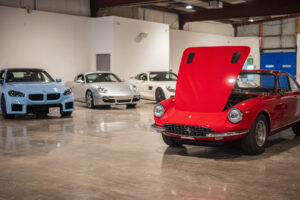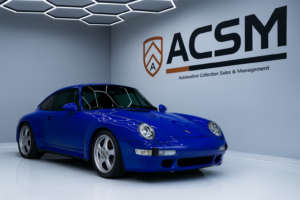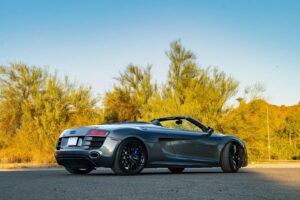

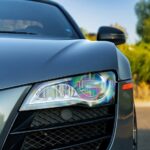

For decades, Audi has been a brand synonymous with luxury, performance, and engineering precision, but it was never considered a major player in the exotic car world. Known for producing well-rounded vehicles that balanced comfort and speed, Audi carved its niche in the automotive market with models like the A4, A6, and performance-oriented RS variants. However, with the introduction of the Audi R8 in 2006, and specifically the 2012 R8 V10, Audi took a bold step into uncharted territory: the realm of true supercars.
The R8 wasn’t just a high-performance luxury car—it was Audi’s first mid-engine supercar, and it marked a pivotal shift in the company’s identity. Here’s how Audi’s R8, and particularly the 2012 R8 V10, revolutionized the brand and placed it alongside the world’s most revered supercar makers.
Supercar Performance: The Heart of the R8 V10
The 2012 Audi R8 V10 set the tone for what would become a serious contender in the supercar arena. Audi was no stranger to performance, but the leap to a 5.2-liter V10 engine producing 525 horsepower was a departure from its usual offerings. This engine, capable of launching the R8 from 0 to 60 mph in a blistering 3.7 seconds, provided supercar-level acceleration that was previously unattainable in Audi’s lineup.
What made this even more remarkable was the shared technology with Lamborghini, Audi’s sister brand under the Volkswagen Group. The R8 V10’s engine was essentially the same one used in the Lamborghini Gallardo, making it clear that Audi was no longer content just to produce sporty luxury cars—they were going for true supercar performance. With a top speed near 200 mph, the R8 V10 was a statement that Audi could play in the same league as Ferrari, Porsche, and of course, Lamborghini.
A New Blueprint: Mid-Engine Layout for Balance and Handling
Perhaps the most significant deviation from Audi’s traditional design was the R8’s mid-engine layout. Most of Audi’s previous performance cars had been front-engine, all-wheel-drive vehicles, known for their stability but not for the razor-sharp handling of mid-engine competitors. By placing the engine behind the driver and closer to the center of the car, Audi dramatically improved the R8’s handling dynamics, giving it the balance and precision that is expected from a supercar.
This was a monumental shift from the norm for Audi. The brand’s engineering expertise, typically applied to front-heavy luxury sedans and SUVs, was now leveraged to create a supercar that could go toe-to-toe with the best in the business when it came to agility, cornering, and driving thrills. The addition of Audi’s legendary Quattro all-wheel-drive system, but with a rear-biased setup, meant that the R8 V10 could handle immense power and still maintain a degree of control that many mid-engine cars struggled with.
Supercar Styling: A Visual Departure
Audi was known for its sleek, sophisticated designs, but the R8’s aggressive, exotic styling was an immediate standout. The R8 V10 wasn’t just fast; it looked the part, too. The low, wide stance, with signature LED headlights and taillights, was far more eye-catching than the more understated designs of Audi’s sedans or coupes. The large side blades, a design feature exclusive to the R8, were a new and striking addition that gave the car a unique, instantly recognizable profile.
For Audi, a brand typically associated with understated elegance, the R8 V10 was an opportunity to flex its creative muscles and show the world it could design a car as visually stunning as it was mechanically advanced.
A Bold Brand Image Shift
The introduction of the R8, especially the 2012 R8 V10, represented more than just a new car—it was a strategic shift in how Audi wanted to be perceived. Historically, Audi’s performance cars, like the RS4 or the RS6, were often compared to high-performance sedans from brands like BMW or Mercedes-Benz. The R8 placed Audi in a different league entirely, positioning it as a serious competitor to Porsche, Ferrari, and Lamborghini in the exotic car segment.
This move was not without intention. The R8’s name was derived from Audi’s immensely successful Le Mans racing prototypes, which had dominated endurance racing in the early 2000s. Audi’s success at Le Mans gave the R8 supercar a direct link to its motorsport pedigree, reinforcing the brand’s ability to engineer race-winning technology for the road.
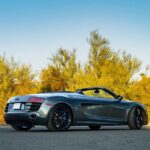
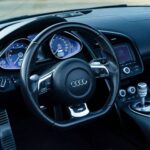
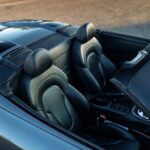
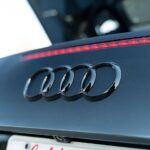
Everyday Usability: The Practical Supercar
Where the R8 V10 truly differentiated itself from other supercars was in its practicality. While many high-performance exotics are thrilling to drive, they can be a chore to live with daily. Audi designed the R8 to offer supercar performance without sacrificing comfort and usability. Its suspension, although firm, was more forgiving than its competitors, and the interior was luxurious and well-appointed, making it an inviting place for everyday driving.
Audi applied its expertise in luxury and technology to the R8’s cabin. With premium leather, a cutting-edge infotainment system, and ergonomic controls, the R8 V10 wasn’t just about going fast—it was about enjoying the experience, whether on a twisty mountain road or just cruising around town.
Conclusion: The R8 as a Catalyst for Audi’s Supercar Future
The 2012 Audi R8 V10 was more than just a deviation from Audi’s usual offerings—it was a bold statement. By introducing a car with supercar performance, exotic design, and everyday usability, Audi effectively transformed its brand image. The R8, and particularly the V10 variant, brought Audi into direct competition with the world’s most prestigious supercar manufacturers, proving that the brand was capable of much more than luxury sedans and sporty SUVs.
The R8 has since become an icon in its own right, representing Audi’s successful leap into the supercar market and solidifying its place as a true player in the exotic car world. In doing so, Audi not only shifted its own trajectory but also raised the bar for what a modern supercar can be—blending luxury, technology, and extreme performance in a way that only Audi could.
